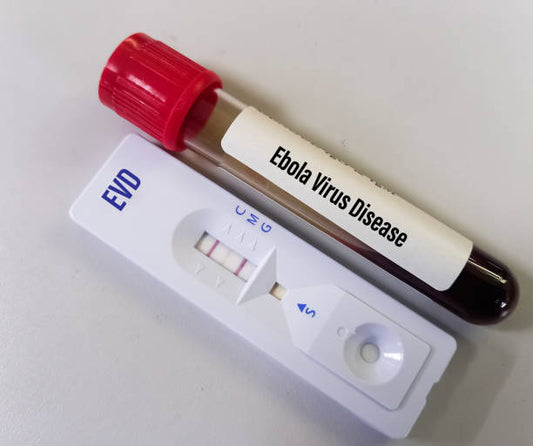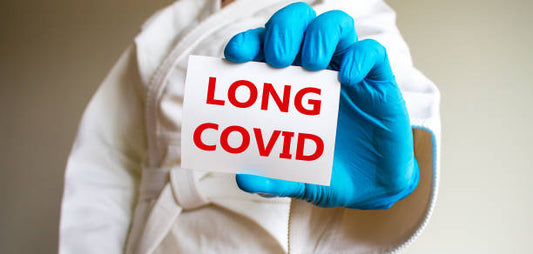Are you facing itchy, red patches on your skin? It could be ringworm, a fungal infection. Ringworm is contagious, spreading through skin-to-skin contact, sharing items, or contact with infected pets. Timely diagnosis and treatment are essential to halt its spread. Learn more about ringworm, its appearance, diagnosis, and treatment.

Understanding Ringworm: Ringworm stems from a fungal infection, not worms, caused by dermatophytes. This results in a red or silvery ring-like rash, usually on arms, legs, torso, or scalp. It's itchy and treatable with antifungal creams.
Causes of Ringworm:
- Contact with infected persons/animals.
- Contaminated items like clothing, bedding, and towels.
- Moist, warm environments such as locker rooms and pools.
- Sweating.
- Poor hygiene.
- Weakened immune system.

Symptoms of Ringworm:
- Itchy, scaly, bumpy skin patches.
- Crusty, red or silvery patches with raised edges.
- Patches with redder outer edges and normal centers.
- Patches lighter/darker than surrounding skin.
- Patches with blisters, scales, fluid, or pus.
- Dry, scaly patches.
- Tender or painful patches.

Appearance of Ringworm: Typically, red patches with raised edges forming circles. Can also be scaly with a clear center – inflamed or not. It can itch or not, sometimes spreading and joining to create larger patches.
Diagnosing Ringworm: Doctors diagnose by examining skin, often taking a small scraping for microscope analysis. Scalp cases may require a blood test.
Preventing Ringworm: Practice good hygiene, avoid infected people/pets. Wear sandals in public showers. Wash hands after touching affected areas. Isolate infected pets.
Treatment Options for Ringworm:
- Antifungal Creams: Over-the-counter creams containing miconazole, clotrimazole, terbinafine, or ketoconazole kill the fungus.
- Antifungal Soaps: Used with creams, these soaps contain ingredients like chlorhexidine and ketoconazole.
- Oral Antifungals: Prescribed for severe cases, they're taken orally.
- Antifungal Shampoos: For scalp cases, shampoos with ketoconazole or selenium sulfide are used.
Home Remedies for Ringworm:
While medical treatment is the primary approach, some home remedies can complement the healing process:
- Tea Tree Oil: With natural antifungal properties, tea tree oil can be diluted and applied topically.
- Coconut Oil: Its antimicrobial properties can help soothe the affected area and prevent spreading.
- Apple Cider Vinegar: Its acidic nature creates an inhospitable environment for fungi.
- Garlic: Crushed garlic can be mixed with olive oil and applied as a paste.
- Turmeric: Known for its healing properties, a turmeric paste can be effective.
Preventive Measures:
- Maintain proper hygiene and keep the skin clean and dry.
- Avoid sharing personal items like towels, clothes, and combs.
- Wear breathable fabrics and avoid tight clothing.
- Keep pets with skin issues away from direct contact.
Simplify Your Choices: Product Suggestions
LEEBORD Daad Ka Brahmastra: Effective Ringworm Cream for Relief
Clocip KZ Soap for Fungal Infection and itching
Ensure you follow treatment instructions closely. If no improvement is seen after a few weeks, consult a doctor.
Author: Nikita Vishnoi BCA













5 comments
Am using this opportunity to thank Dr. Guba is a grateful thing to me, for over years I have been sick with Hepatitis B disease, I have done a lot of things to get cured of my diseases and nothing has worked out. I have taken different types of medication for it , but it still doesn’t work for me. I still keep going for a check up so that the doctor will tell me my disease has be gone, because i’m taking my medicine with no result nothing has been cured, I have spent a lot of money just to get cure of Hepatitis B. until my old time friend came to my place and saw what am going through, and then direct me to contact Dr. Guba who is a very powerful man, which I did explain my problem to Dr. Guba and send me a herbal remedy bottle and explain to me how I should drink it. So I started to drink the herbal tea in one week that I drink the herbal tea. I went for a check up to check if I’m cured from Hepatitis B disease, then the nurse told me nothing is wrong with me anymore and said I’m fine. I am the happiest person right now. I promise Dr. Guba I will testify about his good work on the internet. Reach out to Him Via: drgubahealingherbs@gmail.com Thank you so much sir for what you did for me you’re the best of all. WhatsApp +2348162388034 ORwebsite: https://drgubahealing herbs.wixsite.com/guba-healing-herbs
I already gave up on ever getting cured of HSV2 because i have try many treatment none of them work out for me i have gone to different hospital they always tell me the same thing there is no cure for herpes, when i came across a post about Dr Osaka in the net from a lady called Angela i contacted her and she reassured me with his herbal medicine which i took according to the way he instructed, that how i was cured. I doubted at first because i have been to a whole lot of reputable doctors, tried a lot of medicines but none was able to cure me. so i decided to listen to him and he commenced treatment, and under two weeks i was totally free from Herpes. i want to say a very big thank you to DR Osaka for what he has done in my life. feel free to leave him a message on email drosakaherbalhome99@gmail.com or also Whats-app him +2349024827182.. he also cure all this 1.HIV 2.HIV HPV 3 .ALS 4.
I would gladly tell you all that i was able to put an end to my divorce issue and restore my marriage again, because i never wanted it to happen. I don’t know what came over my husband that he had file for divorce, i tried to talk him out of it but he didn’t listen to me, i had no other option than to seek for the help in any where I could think of and went to the length of contacting DR. PRINCE and now am glad I did ask for help from him. Because if not for the help Dr. PRINCE of lovetemplesolution@priest.com or WhatsApp via: +254795696876 I don’t know what would have become of my marriage now because i loved my husband so much that i couldn’t stand loosing him. The spell worked like magic with the way and manner my husband change and started showing love instead of the divorce he was planning. I’m just too happy that everything is in place for me now. I would gladly recommend the use of spell to any one going through marriage problems and want to put an end to it email Dr. PRINCE through his website on lovetemplesolution@priest.com or WhatsApp via: +254795696876 and that was were i got the help to restore my marriage.
Happiness is all i see now I never thought that I will be cured from HERPES virus again. I have been suffering from a deadly disease (HERPES) for the past 2 years now, I had spent a lot of money going from one places to another, from churches to churches, hospitals have been my home every day residence. Constant checks up have been my hobby not until this faithful day, I was searching through the internet, I saw a testimony on how Dr happy helped someone in curing his HERPES disease, quickly I copied his email which is happylovespell2@gmail.com just to give him a test I spoke to him, he asked me to do some certain things which I did, he told me that he is going to provide the herbal cure to me, which he did, then he asked me to go for medical checkup after some days after using the herbal cure, behold I was free from the deadly disease, he only asked me to post the testimony through the whole world, faithfully am doing it now, please brothers and sisters, he is great, I owe him in return. if you are having a similar problem just email him on : happylovespell2@gmail.com or WhatApp: +234 (706) (8494) (711)
His Web Site….https://happylovespell2.webnode.com/
Herbal treatment is 100% guaranteed for HSV cure and other drug resistance infections, the reason why most people find it difficult to cure HSV 1 or 2 is because they believe in medical reports, drugs and medical treatments which are not helpful to cure HSV and haven’t proved any sign of helping. Natural roots/herbs are the best remedy which can easily eradicate herpes forever. I never believed it until I was helped and cured of my 3 years genital herpes with natural herbal medicines from Dr Okosun. Where other medical prescribed drugs and treatments failed, Dr Okosun natural herbs helped save me from Genital herpes permanently and I’m so grateful for this. You can also get help from this great and powerful African Herbalist Dr Okosun by reaching him via his email: drokosun55@gmail.com
or WhatsApp +2348124363791
God bless you all.